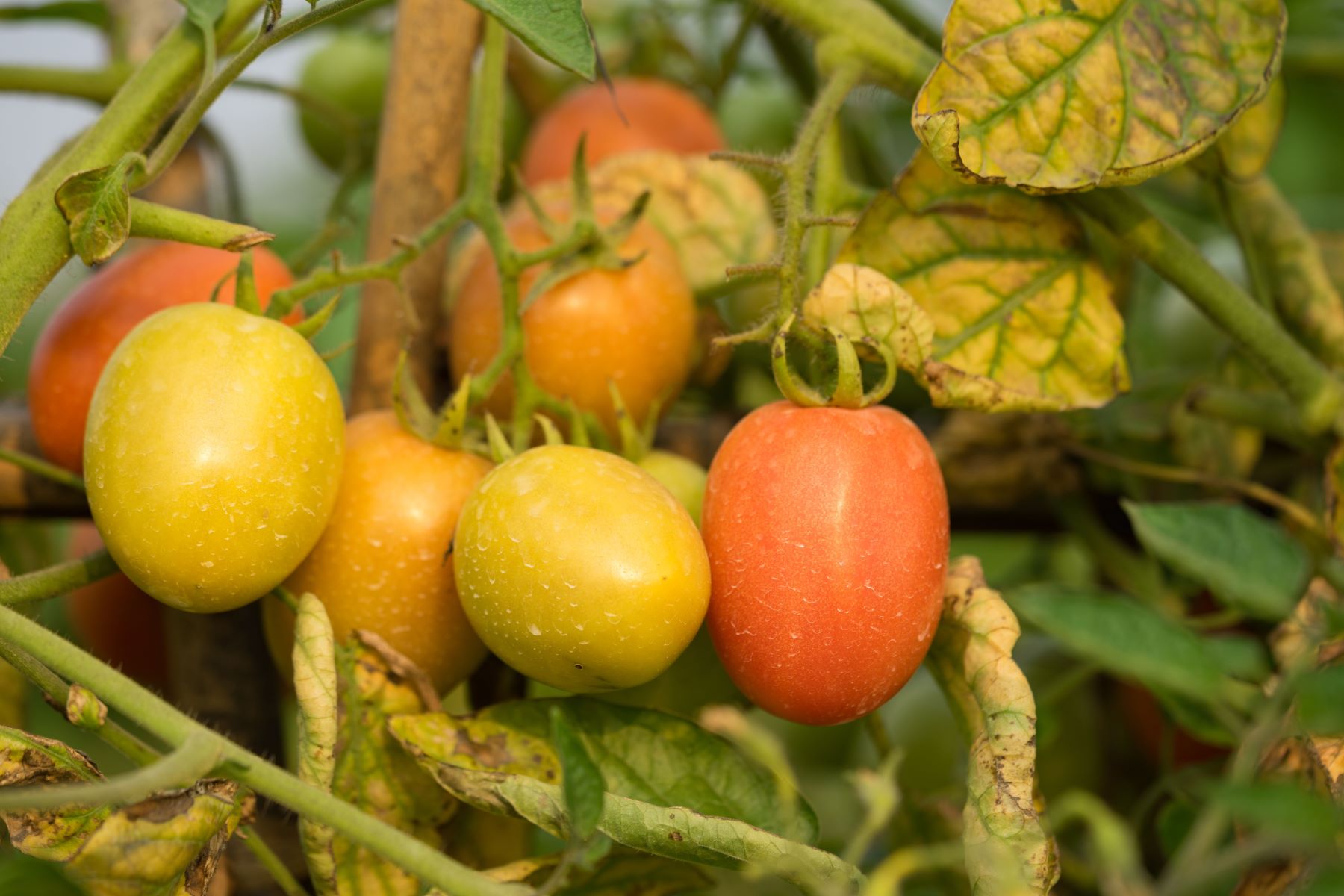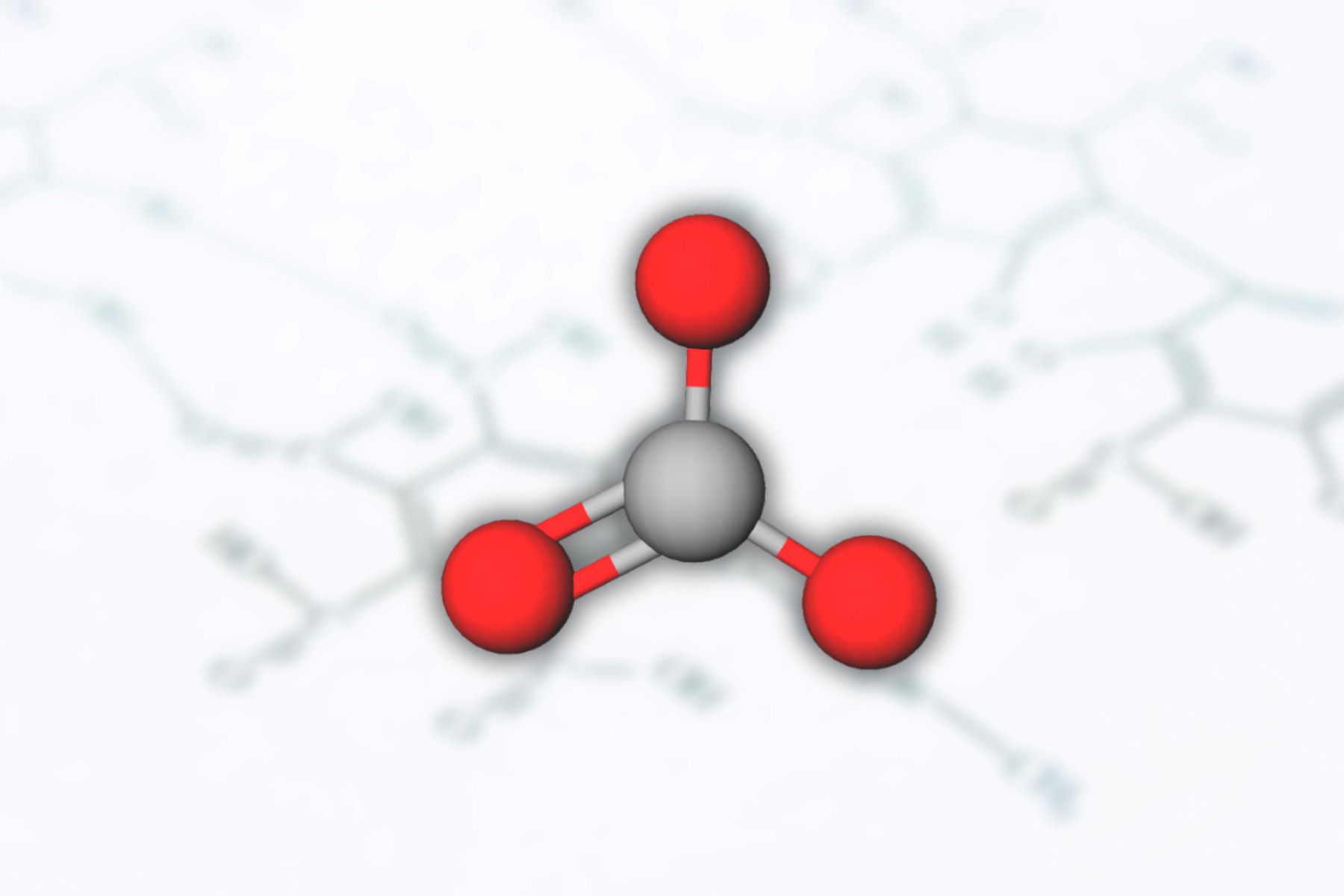Home>Lifestyle>5 Signs You’re Overwatering Your Tomatoes – Number 3 Will Shock You!


Lifestyle
5 Signs You’re Overwatering Your Tomatoes – Number 3 Will Shock You!
Published: January 6, 2024
Discover the top 5 signs of overwatering tomatoes and learn how to avoid this common gardening mistake. Improve your lifestyle with these essential tips!
(Many of the links in this article redirect to a specific reviewed product. Your purchase of these products through affiliate links helps to generate commission for Regretless.com, at no extra cost. Learn more)
Table of Contents
Introduction
Tomatoes are a staple in many gardens, cherished for their juicy, flavorful fruits that add a burst of freshness to salads, sandwiches, and sauces. However, achieving a bountiful tomato harvest requires careful attention to their watering needs. While providing adequate water is crucial for the health of tomato plants, overwatering can lead to a host of problems that sabotage their growth and productivity.
In this article, we will explore the telltale signs that your tomatoes may be receiving too much water. By understanding these indicators, you can take proactive measures to address the issue and promote the thriving growth of your tomato plants.
Overwatering is a common mistake made by both novice and experienced gardeners. It's easy to assume that more water equates to healthier plants, but in reality, excessive moisture can drown the roots, suffocate the plant, and create an environment ripe for disease. By familiarizing yourself with the signs of overwatering, you can prevent potential damage and set your tomatoes on the path to flourishing.
So, let's delve into the five key signs that your tomatoes may be suffering from overwatering. By recognizing these indicators early on, you can adjust your watering practices and nurture robust, vibrant tomato plants that yield an abundant, delectable harvest.
Read more: 5 Signs Your Lawyer Is Selling You Out
Sign 1: Yellowing Leaves
One of the most prominent signs of overwatering in tomato plants is the appearance of yellowing leaves. When the leaves of your tomato plants begin to turn yellow, especially at the bottom of the plant, it's a clear indication that something is amiss with their water intake. The yellowing of leaves occurs due to a lack of oxygen in the root zone, a direct consequence of waterlogged soil. This impedes the plant's ability to absorb nutrients, leading to the discoloration of the leaves.
As overwatering persists, the yellowing may progress, and the affected leaves can become wilted and fragile. If left unaddressed, this condition can significantly compromise the overall health and productivity of the tomato plant.
It's crucial to differentiate between the natural yellowing and shedding of older leaves, which is a normal part of the plant's growth cycle, and the abnormal yellowing caused by overwatering. When overwatering is the culprit, the yellowing tends to occur on multiple leaves, often accompanied by a droopy appearance.
To address this issue, it's essential to assess the moisture level of the soil. A simple way to do this is by gently inserting your finger into the soil up to the second knuckle. If the soil feels excessively wet or waterlogged, it's a clear indication that the plant is receiving too much water. In such cases, adjusting the watering frequency and allowing the soil to dry out slightly before the next watering session can help restore a healthier balance.
Moreover, ensuring proper drainage in the planting area and using well-draining soil can aid in preventing water accumulation around the roots. By taking these proactive measures, you can mitigate the risk of overwatering and safeguard your tomato plants from the detrimental effects of excessive moisture.
By recognizing the significance of yellowing leaves as an indicator of overwatering, you can promptly intervene and implement corrective measures to restore the vigor and vitality of your tomato plants. This proactive approach is instrumental in nurturing robust, thriving tomatoes that bear an abundant harvest of luscious, sun-ripened fruits.
Sign 2: Wilting Plants
Wilting plants serve as a visual distress signal, often indicating an imbalance in the plant's water uptake and transpiration process. When tomato plants are overwatered, their root systems suffocate due to the excessive moisture in the soil, leading to a diminished capacity to absorb essential nutrients and oxygen. Consequently, the plants struggle to maintain turgidity, resulting in wilting foliage.
The wilting of tomato plants due to overwatering is distinguishable from the temporary wilting that occurs during the hottest part of the day. Overwatering-induced wilting is persistent and may occur even when the soil is moist, as the roots are unable to function optimally in waterlogged conditions. Additionally, the wilting may begin at the lower leaves and progress upwards, signaling the plant's struggle to cope with the excess moisture.
Upon observing wilting in tomato plants, it is imperative to assess the soil moisture to determine if overwatering is the underlying cause. A simple soil moisture test, such as inserting a finger into the soil, can provide valuable insights. If the soil feels excessively wet or waterlogged, adjustments to the watering regimen are essential to restore the plant's vitality.
Addressing overwatering-induced wilting involves allowing the soil to dry out to an appropriate moisture level before the next watering cycle. This allows the roots to recuperate and resume their normal functions, fostering the revival of turgid, healthy foliage. Furthermore, optimizing the drainage in the planting area and using well-draining soil can mitigate the risk of overwatering, promoting a conducive environment for the tomato plants to thrive.
By recognizing wilting as a sign of overwatering, gardeners can intervene promptly, implementing corrective measures to restore the vigor and resilience of their tomato plants. This proactive approach is pivotal in nurturing robust, flourishing tomatoes that yield an abundant harvest of succulent, sun-ripened fruits.
Understanding the nuanced language of plants, including their visual cues and responses to environmental stressors, empowers gardeners to cultivate a harmonious and thriving garden. By honing this awareness and responding attentively to the needs of tomato plants, gardeners can foster an environment where these beloved fruits flourish and thrive, rewarding the senses and the palate with their delectable offerings.
Sign 3: Mold and Fungus Growth
The presence of mold and fungus on tomato plants is a glaring indication of overwatering, signaling an environment conducive to the proliferation of these detrimental organisms. Overwatering leads to excessive soil moisture, creating a damp, stagnant setting that promotes the growth of mold and fungus on the plant's foliage and surrounding soil.
Mold and fungus infestations manifest in various forms, including powdery mildew, gray mold (Botrytis cinerea), and damping-off disease, each posing a threat to the health and vitality of tomato plants. Powdery mildew appears as a white, powdery coating on the leaves, while gray mold presents as fuzzy gray patches on the affected plant parts. Damping-off disease, commonly observed in seedlings, causes the young plants to collapse at the soil line due to fungal attack.
The detrimental impact of mold and fungus growth extends beyond the visual blemishes on the plants. These organisms compromise the plant's ability to photosynthesize, impede nutrient uptake, and weaken the plant's immune defenses, rendering it more susceptible to diseases and environmental stressors.
Addressing mold and fungus growth necessitates a multifaceted approach aimed at rectifying the underlying overwatering issue and mitigating the spread of these harmful organisms. Adjusting the watering practices to achieve a balanced moisture level in the soil is paramount, as it creates an inhospitable environment for mold and fungus. Additionally, enhancing the air circulation around the plants by pruning overcrowded foliage and ensuring adequate spacing facilitates the drying of plant surfaces, reducing the risk of mold and fungus proliferation.
Furthermore, employing preventive measures such as applying organic fungicides and incorporating beneficial microbes into the soil can bolster the plant's natural defenses against mold and fungus, fostering a resilient, disease-resistant ecosystem.
By recognizing mold and fungus growth as a compelling indicator of overwatering, gardeners can take proactive measures to restore the optimal growing conditions for their tomato plants. This proactive approach is instrumental in safeguarding the plants from the detrimental effects of excessive moisture, nurturing vibrant, robust tomatoes that thrive in a balanced, nurturing environment.
Sign 4: Stunted Growth
Stunted growth in tomato plants serves as a tangible manifestation of the adverse effects of overwatering, reflecting the plant's struggle to thrive in an environment inundated with excessive moisture. When tomato plants are subjected to overwatering, their root systems suffocate, impeding the uptake of essential nutrients and oxygen crucial for robust growth. Consequently, the plants exhibit stunted growth, characterized by a lack of vigor and an inability to reach their full developmental potential.
The impact of stunted growth is evident in various aspects of the plant's morphology and overall stature. Affected tomato plants may display diminished vertical growth, with noticeably shorter stems and a general lack of upward progression. Additionally, the development of new leaves and branches may be hindered, resulting in a sparse, underwhelming foliage canopy. The stunted plants often exhibit a pale, lackluster appearance, further underscoring their struggle to thrive in waterlogged conditions.
Furthermore, the production of flowers and fruits may be markedly reduced or entirely inhibited in tomato plants experiencing stunted growth due to overwatering. The plant's energy becomes diverted towards coping with the adverse effects of excessive moisture, compromising its reproductive capacity and diminishing the potential harvest.
Addressing stunted growth resulting from overwatering necessitates a concerted effort to rectify the underlying issue and restore optimal growing conditions for the tomato plants. Adjusting the watering frequency and volume to allow the soil to dry out slightly between watering sessions is crucial in alleviating the stress imposed by excessive moisture. This enables the roots to recuperate and resume their normal functions, fostering renewed growth and vitality in the plants.
Furthermore, optimizing the drainage in the planting area and utilizing well-draining soil can mitigate the risk of overwatering, creating a conducive environment for robust growth. By enhancing the soil structure and promoting efficient water movement, gardeners can empower their tomato plants to thrive, free from the constraints of waterlogged conditions.
By recognizing stunted growth as a clear indication of overwatering, gardeners can intervene proactively, implementing corrective measures to restore the vigor and resilience of their tomato plants. This proactive approach is pivotal in nurturing robust, flourishing tomatoes that yield an abundant harvest of succulent, sun-ripened fruits, embodying the essence of a thriving, bountiful garden.
Read more: 5 Clear Signs Your Transmission Is Slipping
Sign 5: Waterlogged Soil
Waterlogged soil poses a significant threat to the health and vitality of tomato plants, serving as a definitive indicator of overwatering. This condition arises when the soil becomes saturated with excessive moisture, impeding the essential exchange of gases and nutrients vital for the well-being of the plant's root system. The detrimental effects of waterlogged soil reverberate throughout the entire plant, manifesting in a range of distress signals that underscore the urgency of addressing this pervasive issue.
The consequences of waterlogged soil extend beyond the immediate impairment of root function, permeating the very fabric of the plant's physiological processes. The lack of oxygen in waterlogged soil hampers the aerobic respiration of the roots, leading to a cascade of adverse effects that compromise the plant's overall vigor and resilience. Additionally, the excessive moisture creates an environment conducive to the proliferation of anaerobic microorganisms, further exacerbating the stress imposed on the plant.
Visually, waterlogged soil may exhibit surface pooling of water, indicating the saturation of the soil beyond its capacity to absorb and drain excess moisture. In addition, the soil may feel excessively wet to the touch, lacking the friable texture characteristic of well-draining soil. These tangible indicators underscore the urgent need to address the overwatering issue and restore a balanced moisture level in the soil.
Addressing waterlogged soil necessitates a multifaceted approach aimed at rectifying the root cause of overwatering and mitigating the adverse effects on the plant. Adjusting the watering regimen to allow the soil to dry out slightly between watering sessions is pivotal in alleviating the saturation of the soil and restoring a conducive environment for the roots. Furthermore, enhancing the drainage in the planting area through the incorporation of organic matter and the implementation of raised beds can facilitate efficient water movement, mitigating the risk of waterlogging.
Moreover, the selection of well-draining soil and the strategic positioning of the planting area can preemptively mitigate the risk of waterlogged soil, fostering an environment where the tomato plants can thrive without the constraints of excessive moisture. By addressing the issue of waterlogged soil, gardeners can empower their tomato plants to flourish, free from the impediments imposed by overwatering, and nurture a bountiful, vibrant garden teeming with the promise of a rich harvest.
Conclusion
In the realm of tomato cultivation, the significance of understanding and addressing the signs of overwatering cannot be overstated. The five key indicators – yellowing leaves, wilting plants, mold and fungus growth, stunted growth, and waterlogged soil – serve as poignant signals that prompt gardeners to reassess their watering practices and restore a harmonious balance in the growth environment for their cherished tomato plants.
By recognizing the nuanced language of plants, including their visual cues and responses to environmental stressors, gardeners can cultivate a deeper connection with their tomato plants, fostering an environment where these beloved fruits thrive and flourish. The journey of nurturing tomatoes transcends the mere act of cultivation; it embodies a symbiotic relationship between the gardener and the plant, rooted in attentiveness and care.
Understanding the intricate interplay between water, soil, and plant health empowers gardeners to proactively intervene and implement corrective measures when the signs of overwatering manifest. This proactive approach is instrumental in safeguarding the plants from the detrimental effects of excessive moisture, nurturing vibrant, robust tomatoes that thrive in a balanced, nurturing environment.
As gardeners embark on the endeavor of cultivating tomatoes, they embark on a journey of discovery, learning to decipher the subtle whispers of nature as expressed through the language of plants. Through this journey, they cultivate not only a bountiful garden but also a profound appreciation for the resilience and beauty inherent in the natural world.
In conclusion, the journey of cultivating tomatoes transcends the tangible harvest; it embodies a profound connection with the rhythms of nature and the intricate dance of growth and nurturing. By heeding the signs of overwatering and responding with mindful adjustments, gardeners embark on a transformative journey, fostering an environment where tomatoes thrive and flourish, bearing the promise of abundant, sun-ripened fruits that embody the essence of a thriving, bountiful garden.














